Each collaboration starts
with a dialogue
Conversation with Jochen Meyer
Text published in Newspaper Jan Mot no. 125, January 2021.
Julia Wielgus: Before discussing specific collaborations, I would like to ask you a few general questions. Could you tell me what collaboration means to you?
Jochen Meyer: Collaboration is team effort, working together. As gallerists we are per se collaborators: first of all we collaborate with our artists. I think that this is the most important collaboration that we have because we are often the first partner of the artist: being supportive, being the first who sees the work in the studio, criticizes the work, develops ideas together, helps to realise projects in terms of financial means, content level, production, publication, but also research, writing, collaboration with institutions and so on. Therefore I think that it’s part of our DNA to be collaborative. And it’s something that I appreciate a lot about being a gallerist.
But I am also not a lone fighter, that’s why I decided or naturally developed the gallery together with my partner Thomas (Riegger). I really enjoy working in a partnership as well as working in a team at the gallery. We share a very collaborative, low hierarchy model of working together at the gallery. Each member of the team can grow within the structure, contribute ideas and participate in decision making. I am not so much interested in the idea of being the owner or boss, I am more interested in this institution becoming more open, more fluid and flexible.
So collaborating is simply joining forces, bringing together all possible potential to realise ideas and projects.
JW: What is most meaningful for you that you learnt from collaborating?
JM: It’s not surprising when I’d say that we grow and learn from one another. Each collaboration starts with a dialogue, sharing ideas, learning to listen to other people, sometimes being patient, being respectful of other individuals’ opinions, working towards an idea together. And to learn all that as a participant of collaborations is something that is very meaningful to me.
JW: What do you consider the biggest challenge of working together?
JM: I need to learn to be sometimes more patient towards different opinions or speeds.
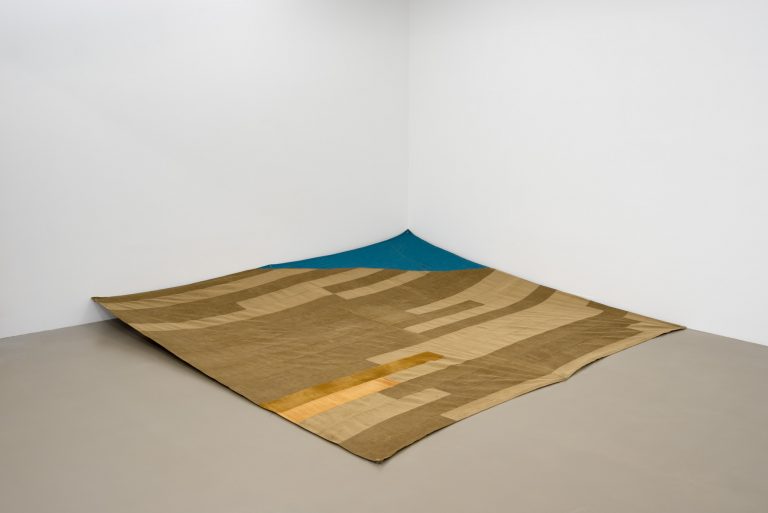
Helen Mirra, Portable Deck, 1998. Photo: © Lukas Giesler. Courtesy: the artist and Meyer Riegger, Berlin/Karlsruhe
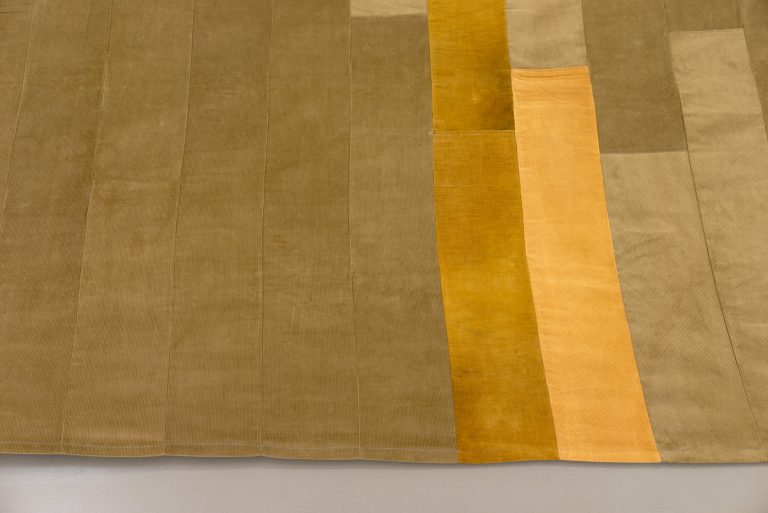
Helen Mirra, Portable Deck, 1998, detail. Photo: © Lukas Giesler. Courtesy: the artist and Meyer Riegger, Berlin/Karlsruhe
JW: Looking back at the past year, the confrontation with the pandemic produced a sense of urgency that became the basis of numerous collaborations. Collaborating is obviously not new in the art world but has this notion evolved over the last year? What was new or different?
JM: I think that collaborations started on a different level with the pandemic because we all felt that it is important to work together to foster the infrastructure of the galleries and this could happen on a local as well as international level because we were all facing similar problems. In Berlin from the beginning of the pandemic we bonded under the roof of the Gallery Weekend, the institution that was established in 2005 consisting of roughly 50 galleries. We managed to bring our infrastructures, knowledge, relationships, networks together in order to help resolve problems like legal issues, how to apply for public support, how to negotiate with the landlord etc. This type of acts of solidarity or efforts happened also in other cities, famously in London, in Los Angeles and led also to activities like the Gallery Platform LA. Both locally and internationally, amongst galleries that share the same values in a broader sense, we felt that the artworld is an ecosystem that needs to be protected and that there is an interdependence which is far more important than competition. And out of this spirit a lot of things have grown out.
JW: And we needed to be hit by a crisis to come to that…
JM: It seems so indeed. Of course there have been activities, especially more local ones, such as the Gallery Weekend Berlin that I already mentioned which is a very successful collaboration between the Berlin galleries. It was developed from an understanding that galleries in the city can only achieve certain things when they join forces, when they do something where all galleries are at the same level, share the idea of doing exhibitions together and turn the city into kind of a festival. But with the crisis we had a different sensitivity about the ecosystem that we are part of. On the one hand there was the question of surviving the crisis but on the other hand many of us found the ecosystem before the crisis not a very healthy one. The pace for the galleries, artists, even collectors and curators was painful and we as gallerists have a voice in that and can produce change.
JW: You are one of the gallerists who initiated Galleries Curate last year. Its first exhibition project entitled RHE has just started and will continue until May with exhibitions around the theme of water at 21 international galleries and presentations online. How do you start such a collaboration, how do you come together?
JM: We came together before the pandemic as members of the various committees of the Art Basel fairs. In Spring 2020 this group started to exchange ideas on how to deal with the crisis, to give each other support. Later the direction in which it developed was more organic and led to inclusion of additional voices from different areas, cultural contexts, generations and hopefully the project will grow further. It’s been very important also on an emotional level at least for me over the past months to hear how other galleries are holding up, how we can support each other, how we can do things for the better in our ecosystem. It was great to meet every Monday with all those gallerists from around the world and to develop the idea of a collaborative exhibition.
JW: How do you take decisions within Galleries Curate?
JM: So far our decisions have always been developed out of conversations, in a soft way, and I mean it in a positive sense. There was no voting. Voting can be difficult because then it’s black and white, in or out, yes or no. Many of the suggestions of the individual gallerists have been discussed and we found a decision for or against it together.
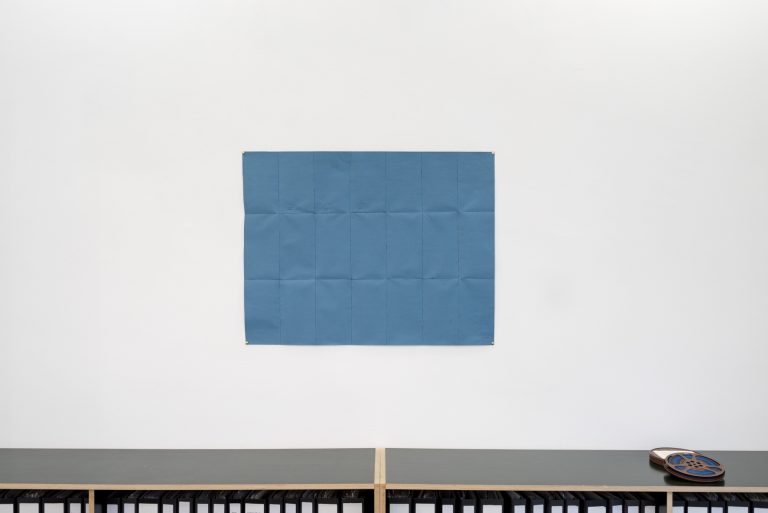
Helen Mirra, Gletscherbachfloß (Glacial-river-raft), installation view, Meyer Riegger, Karlsruhe, 2021. Photo: © Lukas Giesler
JW: How do you imagine the future of Galleries Curate, what do you expect?
JM: Wonderful exhibitions! For me the most interesting aspect is that it leads to physical exhibitions. I don’t believe so much in “digital”, especially not as a sales platform, as I believe in really visiting an exhibition. Even if Galleries Curate is also an online platform, I think that the most important thing for galleries to do, is to develop exhibitions together with our artists and this is what I look forward to. From the beginning, when everybody was in a lockdown in different countries, cities, with different regulations, there was the idea to host other galleries in our own physical spaces. I don’t know in which direction this project is going, but if it is intellectual, cultural exchange, doing exhibitions together, I would be very happy about that.
JW: In the past you were involved in establishing Gallery Weekend Berlin and art berlin contemporary. Recently you participated in talks with the German Government as a representative of galleries of contemporary art. Could you talk about this experience and what you achieved?
JM: The talks with the government came from under the roof of the Gallery Weekend, where we invited gallerists from Berlin to come together in weekly zoom meetings. We found out among others that in the cultural politics in Germany galleries don’t have a voice. We have the Bundesverband Deutscher Galerien und Kunsthändler (BVDG) but somehow this was not our representation. Via Thomas Schulte’s contact to the Minister of Culture, Monika Grütters we learnt that she was looking for representatives the government could talk to and he thought we needed to approach that. Esther Schipper and me were selected next to Thomas Schulte. We called, like in a snowball system many important galleries in Germany saying that we were starting this conversation to get support, to fight against the increase of the VAT etc. and asked if we had their support which was granted to us. Also with got the supoort of the BVDG and the Landesverband der Berliner Galerien (lvbg) and in person by its chairman Werner Tammen who also joined the conversations. What we achieved first of all is financial support for exhibitions in the first part of 2021 (16 Mio. EUR) and each professional gallery could apply for funds up to 35.000 EUR. Most probably this will continue also in the second part of the year. And also the dialogue with the government is continuing. For us it was not only important to be this political group negotiating with the government but also to work on how what we do is perceived. The image of galleries is still very bad in Germany and maybe worldwide. In Germany, during the lockdown we were the only places that could stay open (for most of the period) and do exhibitions. We are part of the cultural life and are doing cultural work. We have a very long standing tradition going back to the beginning of the 20th century, especially Jewish, interrupted by the Nationalsozialismus. So it’s not only about raising money or aligning the VAT for art in the EU. It’s also about changing the representation, the image, of what we are and what we do.
JW: As exciting and relevant it sounds also for your gallery, all these collaborations must take a lot of your time. How do you balance it with the work with the artists of the gallery?
JM: As I said I have a great team and luckily they let me go. It’s an important part of our gallery that it provides this image of being very open to dialogue and collaboration. We also want to bring this quality back into the work on our programme, for instance by doing one to one collaborations and we started a few this year. What is the work of a gallerist? It can be a lot of different things. The pandemic offered a very special opportunity to be in touch on a much deeper level for instance with colleagues, we had more time to exchange but also to engage in various collaborations and to address for example political issues.
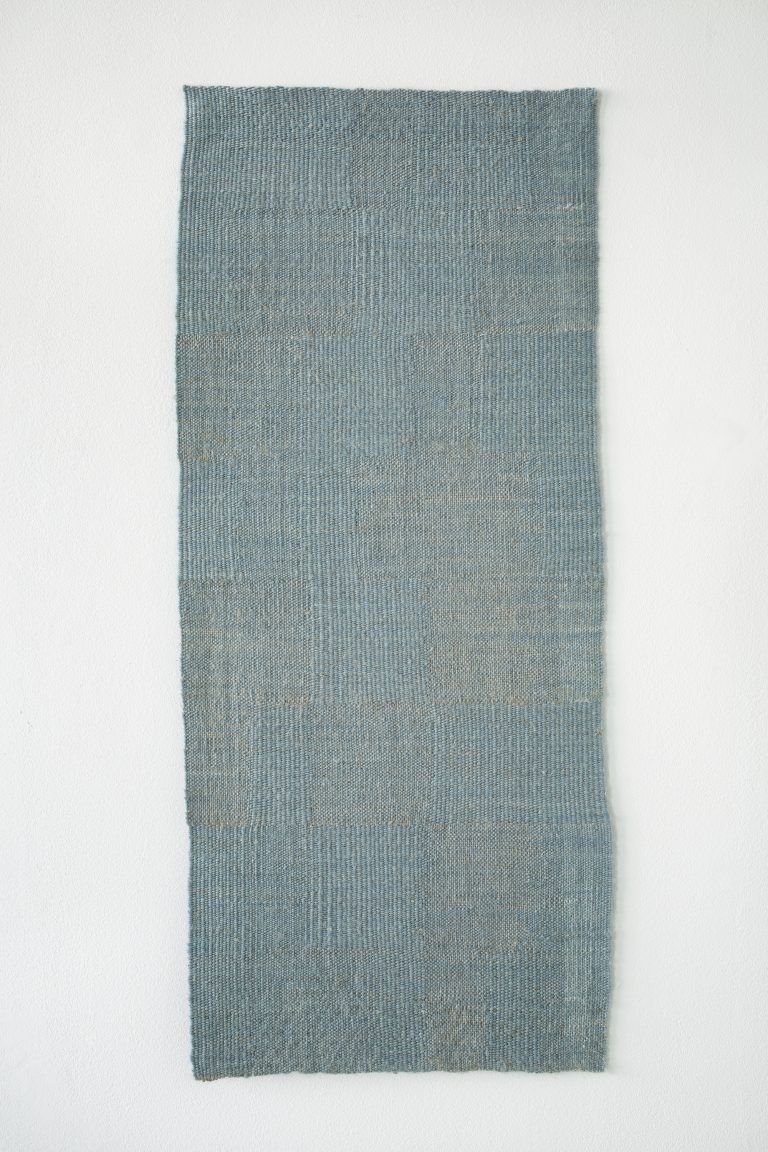
Helen Mirra, Aprilo, 2020. Photo: © Matthias Lindner, Berlin. Courtesy: the artist, Meyer Riegger, Berlin/Karlsruhe & Galerie Nordenhake, Berlin/Stockholm/Mexico
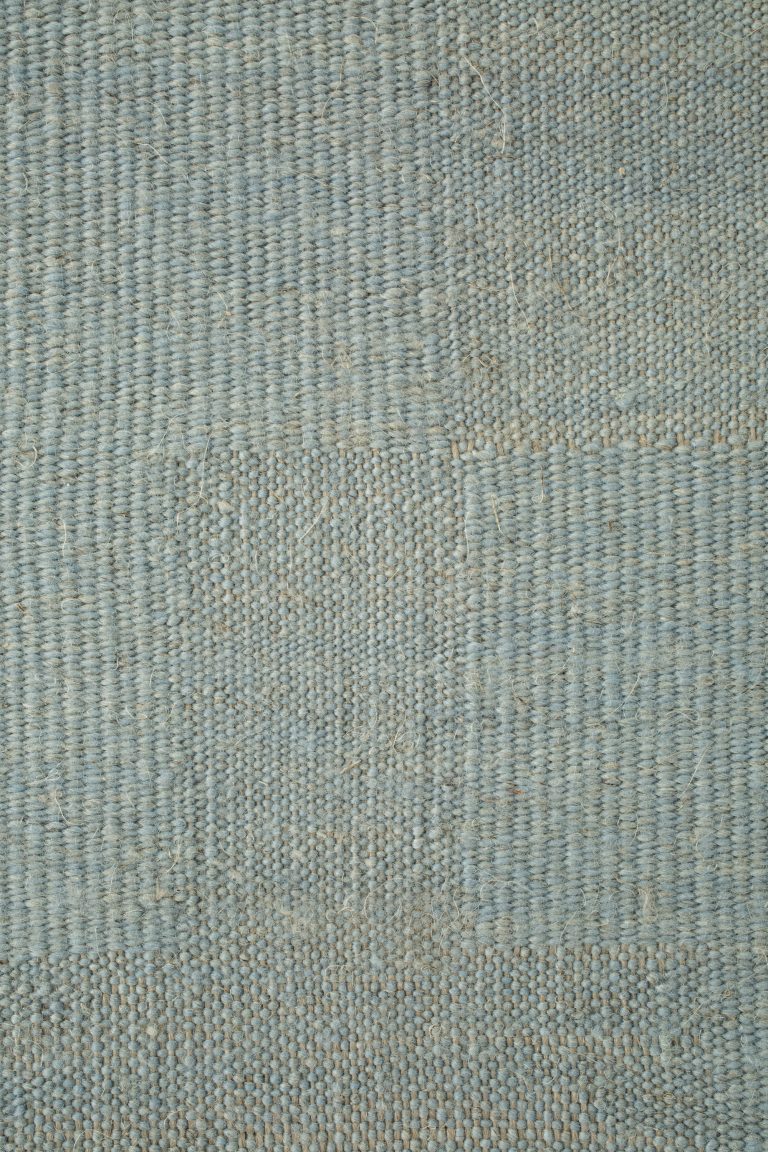
Helen Mirra, Aprilo, 2020. Photo: © Matthias Lindner, Berlin. Courtesy: the artist, Meyer Riegger, Berlin/Karlsruhe & Galerie Nordenhake, Berlin/Stockholm/Mexico
JW: We talked about the ecosystem that is not very healthy which made me think of an illustration I saw, representing an inhabited island and two waves approaching it: a very high one called Covid 19 and behind a much higher one called environmental crisis. I was wondering if aiming at reducing our environmental impact has been a topic within the collaborations you have been involved in and are there any action plans made?
JM: The gallery initiatives I know here in Berlin are not addressing it directly. But I have been also talking earlier about the pace of the art world and that I feel that this pace needs to slow down which implies the environmental question. We need other models. Not only the classical idea of changing the packing material and ship by boat instead of airplane etc. These ideas are in the pipeline and need to be executed. But there are also more general philosophical questions related to how as gallerists or artists we can work on that change. We have ourselves participated in the exploitation of the environment with our activity by participating for instance in fairs in America, Asia. And I don’t know if we can survive as a gallery if we only go to Art Basel in Basel or do not visit our artist in Brazil or collectors in New York. So there is some contradiction between our political and ethical claim and the reality of our business. Therefore I am even more concerned that when we fought the pandemic wave the art world in general will fall back to the same kind of model in which we lived in 2019 and believe that now is the moment to change things. I feel that initiatives like the Gallery Climate Coalition or exhibitions like Down to Earth in which Tino Sehgal was involved at the Gropius Bau (2020) are important and can help to work towards that.
JW: Do you feel that the energies from the collaborations that were created last year can be directed towards dealing with the environmental crisis?
JM: Absolutely. We should use all that collaborative groups in which we are engaged to address this question and to fight for change.
Jochen Meyer is an art historian, curator and gallerist. In 1997 Jochen Meyer and Thomas Riegger opened their gallery in Karlsruhe with AND THEN THERE WERE NONE, an exhibition showing pieces from the Marzona Collection. Conceived in reference to a certain erafrom the sixties, the exhibition was at the same time a benchmark for the gallery program, in which Meyer Riegger have tried to use the political and aesthetic potential of these positions as a link to the present. The gallery focuses on conceptual positions that emphasize the emancipatory potential of art as well as underlining the transcendent capacity of their existence, while always remaining aware that art, as a product of human labor, also reflects society’s condition of dependency. The juxtaposition of international artists from different generations in solo and curated group shows puts these interests into practice. Since 2008 the gallery has also a space in Berlin.
Julia Wielgus works at Jan Mot in Brussels. Jan Mot represents Francis Alÿs, Sven Augustijnen, Pierre Bismuth, stanley brouwn, Andrea Büttner, Manon de Boer, Rineke Dijkstra, Mario Garcia Torres, Dominique Gonzalez-Foerster, Joachim Koester, David Lamelas, Sharon Lockhart, Tino Sehgal, Philippe Thomas, Tris Vonna-Michell and Ian Wilson.
Newspaper Jan Mot is published by the gallery bi-monthly since its opening in 1996. It includes an agenda of the artists’ exhibitions, interviews and articles about the artists of the gallery as well as further contributions reflecting on subjects relevant to the gallery. The Newspaper appears in print, a digital archive of all issues is available on the gallery’s website www.janmot.com.
This conversation took place in the context of the participation of Jan Mot and Meyer Riegger in Galleries Curate: RHE and is the start of a series of contributions in the Newspaper reflecting on the subject of collaboration.
Galleries Curate
In the first days of the Covid-19 pandemic, an informal group of contemporary galleries from around the world came together to discuss how to navigate through the new challenges of the global crisis as it affected our artists, staff and businesses. The relationships among us over weeks of exchange became close and essential and we discovered that while the pandemic had broken many things apart, it had also brought us together. A supportive sense of community ignited positivity and cooperative interactions, and the initial group of twelve grew to twenty-one. As an expression of this unity we initiated Galleries Curate, a collaborative exhibition designed to express the dynamic dialogue between our individual programmes.
Galleries Curate: RHE is the first chapter of this collaboration, an exhibition and website themed around a universal and, we hope, unifying subject: water. Like culture, water is never static but always in flux. From January 4th until May 30th, 2021, a total of 21 exhibitions will be presented concurrently on our online platform and the exhibition spaces of the participating galleries.
Following the inaugural exhibition RHE, Galleries Curate plan to invite new participants and add further curated chapters to a global conversation of thematic relationships between galleries, artists, and their audiences.
RHE
RHE (from Greek for that which flows) is a platform for exhibitions, performances, and public interventions that loosely address the theme of water—geographically, politically, economically or metaphorically. Involving projects with twenty-one galleries, both online and on-site, RHE was conceived to span regions, markets, cultures, and audiences around the world, circulating both within and outside of traditional white-box exhibition spaces.
Why RHE?
RHE is evocative of unity and impermanence, both central concepts in Heraclitean philosophy, expressed most famously by his saying, panta rhei [everything flows]. Through water, we are all connected, physically as well as metaphorically.
Participating Artists (list in formation)
água de beber, Michele Abeles, Francis Alÿs, Giovanni Anselmo, Alvaro Barrington, Lothar Baumgarten, Pavel Büchler, Monster Chetwynd, Lai Chih Sheng, Petah Coyne, Abraham Cruzvillegas, Jan Dibbets, Jason Dodge, Latifa Echakhch, Ficre Ghebreyesus, Andy Goldsworthy, Sky Hopinka, Alfredo Jaar, Gabriel Kuri, Sean Landers, Oliver Laric, Charles Lim, Robert Longo, Robert Mapplethorpe, Arjan Martin, Adam McEwen, Cildo Meireles, Helen Mirra, Sarah Morris, Melvin Moti, Jean-Luc Moulène, Sahil Naik, Melik Ohanian, Pat O’Neill, Pratchaya Phinthong, Jaume Plensa, Pope.L, Aki Sasamoto, Jacolby Satterwhite, Carolee Schneemann, Kate Shepherd, Kwan Sheung Chi, Ko Sin Tung, Simon Starling, Fiona Tan, Michelle Stuart, Cosima Von Bonin, Wang Wei, Richard Wentworth.
Participating Galleries
A Gentil Carioca (Rio de Janeiro)
Blum & Poe (Los Angeles, Tokyo, New York)
Sadie Coles HQ (London)
Chantal Crousel (Paris)
Experimenter (Kolkata) in collaboration with GB Agency (Paris)
Peter Freeman, Inc. (New York, Paris)
Goodman Gallery (Johannesburg, Cape Town, London)
Galerie Lelong & Co (New York)
kurimanzutto (Mexico City, New York)
Take Ninagawa (Tokyo)
Tanya Leighton (Berlin)
Edouard Malingue (Hong Kong, Shanghai)
Marfa’ (Beirut)
Meyer Riegger (Berlin, Karlsruhe)
Mitchell-Innes & Nash (New York)
Jan Mot (Brussels)
Galleria Franco Noero (Turin)
Petzel (New York)
ROH Projects (Jakarta)
Stevenson (Cape Town, Johannesburg, Amsterdam)
STPI (Singapore)
